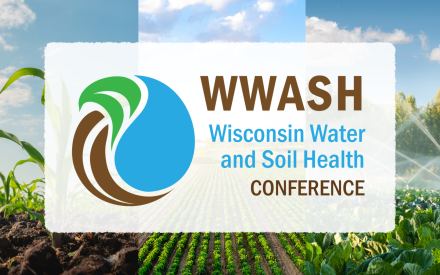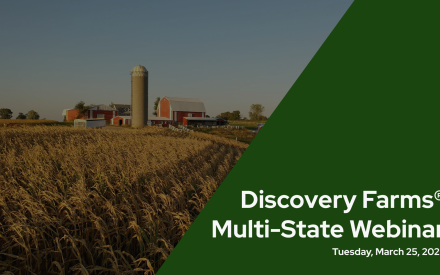Extension’s Ag Water program at the University of Wisconsin-Madison is looking for high-quality on-farm data to help improve our understanding on how soil health practice impacts soil phosphorus stratification.
Nutrient stratification occurs across most agricultural fields, however high soil test phosphorus values at the top inch or two are often associated with no-till fields, where fertility is often surface applied. Research has shown that high levels of soil test phosphorus in the top two inches lead to increased dissolved phosphorus loss from fields. The losses were especially high on frozen ground, a time period when we struggle to control water and phosphorus movement. Questions still exist on if cover crops, and their impact on soil biology, structure, and nutrient cycling, exacerbate or alleviate phosphorus stratification. Our program seeks to explore this relationship and hopes to answer “do long term no-till + cover crops sites have similar levels of stratified P as long term no-till sites? How uniformly does P stratification exist in no-till fields?”
Why Collaborate?
Learn About Soil Fertility Distribution
We are looking to collaborate with individual farmers or farmer groups on a soil test phosphorus survey. Individual participants will gain soil test results and an analysis on how nutrients are distributed within the top 6 inches of their fields.
Scientific Contribution
Your contribution to this work will aid in an understanding of phosphorus stratification and what relationships occur across different landscapes and within different soil health management systems.
Minimize Risk
Groups will receive outreach and education on aggregated results and recommendations for minimizing water quality risks.

How to Participate
Fields of particular interest include those with high soil test phosphorus values, and those utilizing soil health practices (reduced tillage, cover crops, manure) for varied lengths of time.
Contact agwater@extension.wisc.edu for more information or if you’d like to participate.

 Phosphorus Losses Checked by Layered Practices and Careful Timing: A Discovery Farms Project
Phosphorus Losses Checked by Layered Practices and Careful Timing: A Discovery Farms Project Registration Now Open for the 2025 Wisconsin Water and Soil Health Conference
Registration Now Open for the 2025 Wisconsin Water and Soil Health Conference ▶ Watch: 4th Annual Discovery Farms Multi-State Webinar
▶ Watch: 4th Annual Discovery Farms Multi-State Webinar ▶ Watch: Grazing and Water quality, Lessons learned from edge-of-field research
▶ Watch: Grazing and Water quality, Lessons learned from edge-of-field research


